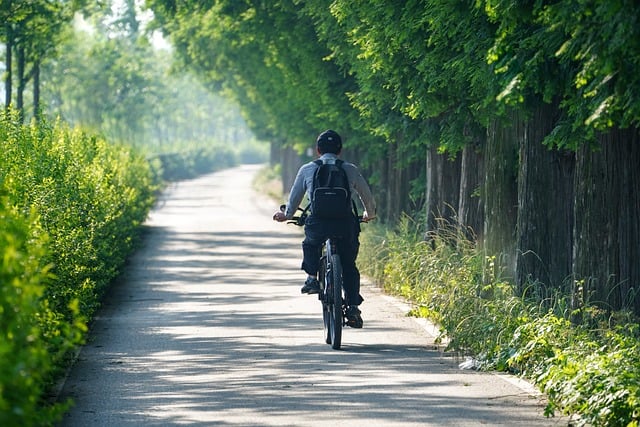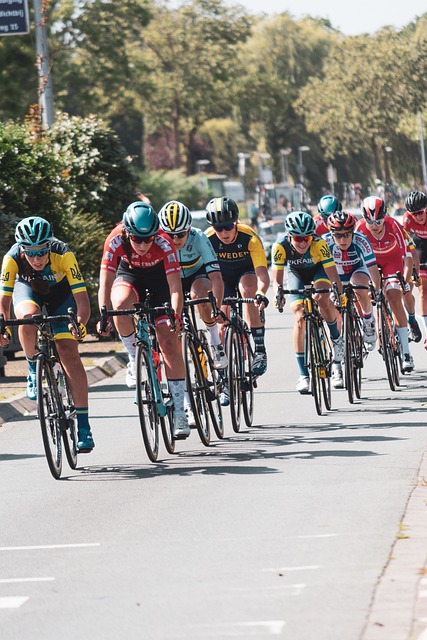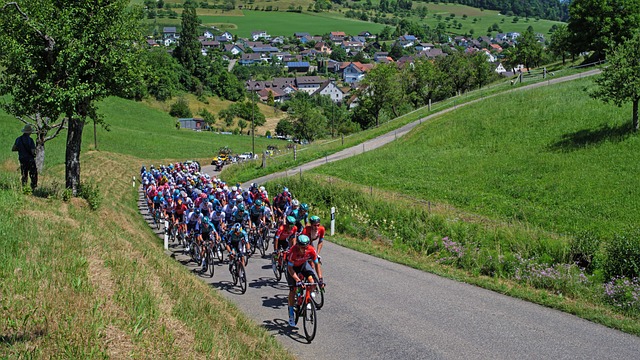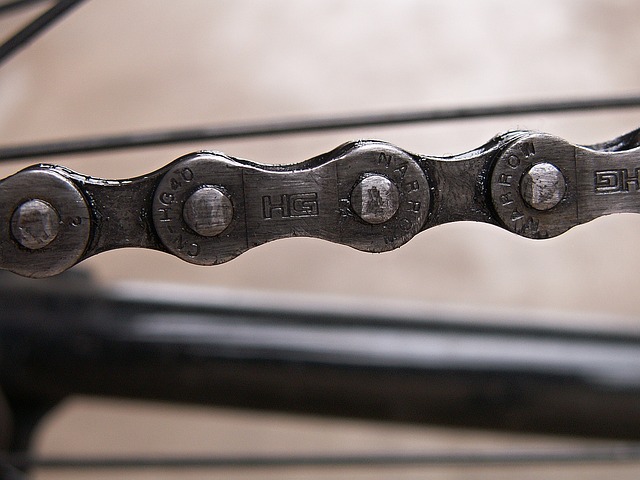When cycling in low-light conditions during early morning hours or at dusk, safety and visibility are paramount. A high-quality flashlight designed for night cycling and biking is essential to ensure you're seen by others on the road. Look for a waterproof flashlight with an O-ring seal to protect against weather elements, and choose one with adjustable brightness settings for energy efficiency. Strobe modes can enhance your visibility by creating a light signal that stands out from a distance. High-lumen spotlights are ideal for long-distance visibility or identifying obstacles ahead, while floodlights provide comprehensive lighting of the immediate path. In wet or foggy conditions, opt for a flashlight with a diffused lens to improve visibility. For overcast mornings, ensure your flashlight has high lumens to compensate for dim light. In snowy weather, use a headlamp or handlebar mount to keep your hands insulated and free for bike control. Pair your flashlight with reflective clothing to increase overall visibility. A durable construction flashlight will withstand the demands of nighttime cycling, ensuring a safe and enjoyable ride. Remember to use flashlights for night cycling and biking that offer these features for optimal performance and safety during your early morning commutes or evening rides.
When the dawn’s early light meets the wheels of your bike, safety becomes paramount for a smooth commute. This article sheds light on selecting the ideal flashlight to ensure visibility and security during your night-time cycling journey. We’ll explore the critical features of top-rated flashlights designed for biking, from their luminous output to their battery efficiency, and offer practical advice on mounting them for optimal use. Whether you’re navigating dark roads or wanting to enhance your presence on the path, understanding lumens and lux, as well as the benefits of strobe modes, will keep you illuminated and alert. Join us as we illuminate the best practices for night cycling safety with flashlights.
- Evaluating the Essentials of Flashlights for Night Cycling Safety
- Bright Beams and Long Runtimes: Top Flashlight Models Suitable for Bike Commutes
- Strategic Placement: Mounting and Attaching Your Flashlight to Your Bike Effectively
- Understanding Lumens and Lux: Measuring the Light Output Needed for Clear Paths Ahead
- Battery Types and Runtime Considerations for Long Commutes at Night
- Enhancing Visibility with Strobe Modes and Additional Lighting Options
- Practical Tips for Using Flashlights in Various Weather Conditions During Early Morning Rides
Evaluating the Essentials of Flashlights for Night Cycling Safety

When embarking on a bike commute under the cloak of night, visibility becomes paramount for safety. A reliable flashlight is an indispensable tool for any cyclist navigating low-light conditions. Flashlights for night cycling and biking should illuminate both the path ahead and enhance your presence to motorists and other road users. Consider a model with a strong beam that casts light far enough to reveal potential hazards on the road, such as potholes, debris, or unexpected obstacles, without blinding yourself or oncoming traffic. The intensity of the light should be adjustable, allowing for a balance between a broad, peripheral illumination and a focused spot for checking surroundings or reading street signs.
In addition to brightness, the durability and design of the flashlight are crucial. It must withstand the elements and the rigors of cycling, often attached to your helmet or handlebars. Opt for impact-resistant materials and weatherproof construction to ensure that your light source remains operational regardless of external conditions. Furthermore, the battery life of your chosen flashlight is a key factor; you need a light that can last through your entire journey without the need for frequent replacements or recharging. A flashlight with high-quality LED technology and energy-efficient design will provide a consistent, reliable output, enhancing both safety and convenience during nighttime bike commutes. Flashlights For Night Cycling And Biking are essential tools that can significantly reduce the risks associated with cycling in the dark, making them an indispensable addition to any cyclist’s arsenal for night riding.
Bright Beams and Long Runtimes: Top Flashlight Models Suitable for Bike Commutes

When cycling in the early morning or late evening, visibility becomes paramount for safety and navigation. Flashlights designed specifically for night cycling and biking are essential tools for any commuter who rides under low-light conditions. The ideal flashlight offers a bright beam to illuminate road hazards and your path, ensuring you can react in time to avoid potential dangers. Models with high lumen outputs provide ample lighting to enhance your field of vision, reducing the strain on your eyes during nighttime rides. Additionally, these lights should come with various light modes, allowing for a balance between long runtime and intense brightness depending on the situation or preference. For those who commute regularly under cover of darkness, investing in flashlights for night cycling and biking that offer long runtimes on lower settings is a practical choice, as it prevents the need to frequently replace batteries or charge the light mid-journey. High-quality models with advanced battery technology can last for hours on end, providing consistent lighting throughout your entire commute. When selecting a flashlight for night cycling and biking, consider models that feature robust construction, water resistance, and secure mounting options to attach the light to your bike without obstructing your movements or handlebar grip. The best flashlights for this purpose are those that offer both a powerful beam and the endurance to last as long as you need them to, transforming your nighttime commute from a potential hazard into a safe and enjoyable experience.
Strategic Placement: Mounting and Attaching Your Flashlight to Your Bike Effectively

When cycling in low-light conditions, strategic placement of your flashlight is paramount for both your visibility to other road users and your ability to navigate safely. Flashlights designed for night cycling and biking often come with mounts or brackets that can be attached to various parts of your bike. To ensure optimal visibility, consider mounting the flashlight on the front handlebar or helmet. This position casts a clear light path ahead, illuminating the road and immediate surroundings, which is crucial for detecting obstacles, potholes, or unexpected turns. For additional safety, a red rear flashlight enhances your bike’s visibility from behind, signaling to trailing vehicles your presence and direction of travel. Positioning this light on the seat post, seat stay, or rear rack, where it is visible from at least 500 feet away, is ideal for maintaining a safe distance between your bicycle and motorists. When selecting a flashlight for night cycling and biking, look for models with durable construction to withstand the elements and secure fastening systems that prevent the light from becoming dislodged during your commute. Adjustable brightness settings are also beneficial, allowing you to conserve battery life when full illumination is not necessary, or to enhance visibility in unlit areas. By carefully considering the placement and features of your flashlight, you can significantly increase your safety and enjoy a more confident cycling experience during early morning or late-night bike commutes.
Understanding Lumens and Lux: Measuring the Light Output Needed for Clear Paths Ahead

When cycling in the early morning or late evening, visibility is paramount for safety and comfort. A reliable flashlight plays a crucial role in illuminating your path and ensuring that you can see potential hazards on the road ahead. Understanding the difference between lumens and lux is essential when selecting a flashlight for night cycling and biking. Lumens measure the total amount of light produced from a source, which translates to how much light is emitted per unit area at a distance of one meter from the source. Lux, on the other hand, measures the intensity of light that falls on a surface, providing insight into how bright an area appears under a certain level of illumination.
For cyclists, a flashlight with a high lumen output is necessary to cut through darkness and penetrate areas where visibility might be poor. However, it’s not just about the highest lumens possible; the beam pattern and focus are equally important. A focused beam can extend your vision further down the road, while a broader beam can enhance peripheral visibility, which is crucial for off-road or less predictable environments. Lux is particularly useful in understanding how much light will be cast on the path immediately in front of you, ensuring that you can clearly see obstacles like potholes, debris, or even animals. When choosing flashlights for night cycling and biking, consider a model with an adjustable beam to switch between a long-distance spotlight for seeing ahead and a broader floodlight for nearby surroundings. This versatility can make a significant difference in maintaining both visibility and situational awareness during your ride.
Battery Types and Runtime Considerations for Long Commutes at Night

When embarking on early morning bike commutes at night, selecting a flashlight that offers reliable illumination and an efficient battery system is paramount for safety and visibility. Lithium-ion batteries are often preferred due to their high energy density, consistent performance across temperatures, and lighter weight compared to alkaline or nickel-based options. For those with longer commutes, opting for a flashlight that incorporates these batteries ensures a brighter beam over extended periods without the frequent need for replacements. The runtime of your flashlight is directly tied to the type of battery it uses and its capacity. High-quality flashlights for night cycling and biking often come with an indicator to display remaining battery life, allowing riders to plan their route and return journey accordingly. Additionally, models featuring adjustable brightness settings can extend runtime by reducing lumens when full illumination isn’t necessary, thus conserving power for when it’s most needed. When considering a flashlight for night cycling and biking, prioritize those with long-lasting batteries and energy-efficient designs to ensure you reach your destination safely and without the added stress of battery concerns.
Enhancing Visibility with Strobe Modes and Additional Lighting Options

When cycling in low-light conditions, especially during early morning or evening commutes, enhancing visibility is paramount for safety and comfort. A reliable flashlight designed for night cycling can significantly improve your presence on the road, ensuring other vehicles and pedestrians are aware of your position. Strobe modes are particularly effective for catching attention; their rapid flashing light can be seen from a distance and serves as an attention-grabbing signal to oncoming traffic. Unlike steady beams that might blend into the darkness, strobe modes create a disorienting yet safe visual cue that cyclists rely on to be seen.
In addition to strobe modes, many flashlights for night cycling offer multiple lighting options to cater to various situations. A high-lumen spotlight can be used to illuminate distant obstacles or to signal from afar, while a lower-lumen floodlight is ideal for broader visibility of the path right in front of you. Some models even include red or green lights, which are less disruptive to night vision and can be used to signal without blinding yourself or others. These additional lighting options allow cyclists to adapt their visibility strategies to different environments and conditions, making them better prepared for a safe and effective bike commute at night. Whether it’s navigating through urban settings or venturing into less-traveled paths, the right flashlight with diverse modes can make all the difference in being seen and ensuring a secure journey.
Practical Tips for Using Flashlights in Various Weather Conditions During Early Morning Rides

When cycling in the early morning hours, visibility is paramount, especially as daylight increases or decreases with the changing seasons. Flashlights for night cycling are invaluable tools for bikers during these rides. To maximize safety and functionality of your flashlight in various weather conditions, consider the following practical tips:
In wet weather, ensure that your flashlight is protected from water damage. Opt for a waterproof model with an O-ring seal to prevent moisture ingress. Position your light to avoid direct beam reflection in your eyes, which can be blinding and distracting. Aim the beam downward slightly to illuminate the road ahead without causing glare. In foggy or misty conditions, use a flashlight with a diffused lens or cover to scatter the light, enhancing visibility of your surroundings. Conversely, on clear mornings, a focused beam can help you see further down the path, which is particularly useful for gravel roads or unlit trails.
For overcast or dusk rides when daylight is low, a high-lumen flashlight will provide the necessary illumination to navigate safely. Choose a light with adjustable intensity settings to conserve battery life when full bright isn’t necessary. In snowy conditions, ensure your hands are insulated and consider a headlamp or handlebar mount for your flashlight, freeing up your hands for better balance and control of your bike. Reflective clothing paired with your flashlight will further enhance your visibility to early morning motorists. Remember to select a flashlight with a durable construction, as the combination of darkness and inclement weather can be harsh on equipment.
When embarking on an early morning bike commute, safety and visibility are paramount. A reliable flashlight tailored for night cycling not only illuminates your path but also ensures you’re seen by others. Selecting a flashlight with a bright beam and long runtime, as detailed in our analysis of top models, is crucial for maintaining clear visibility and safeguarding against unexpected extended journeys. Strategic placement of the light on your bike, as outlined in our guide, maximizes its effectiveness. Understanding the distinction between lumens and lux helps cyclists choose the appropriate light output for their needs. Battery selection also plays a significant role in sustaining your ride. Additionally, utilizing strobe modes and other lighting accessories can enhance visibility, especially under adverse weather conditions during those early morning hours. By integrating these flashlight considerations into your biking routine, you’ll contribute to the safety of your commute and set a precedent for fellow night cyclists.
